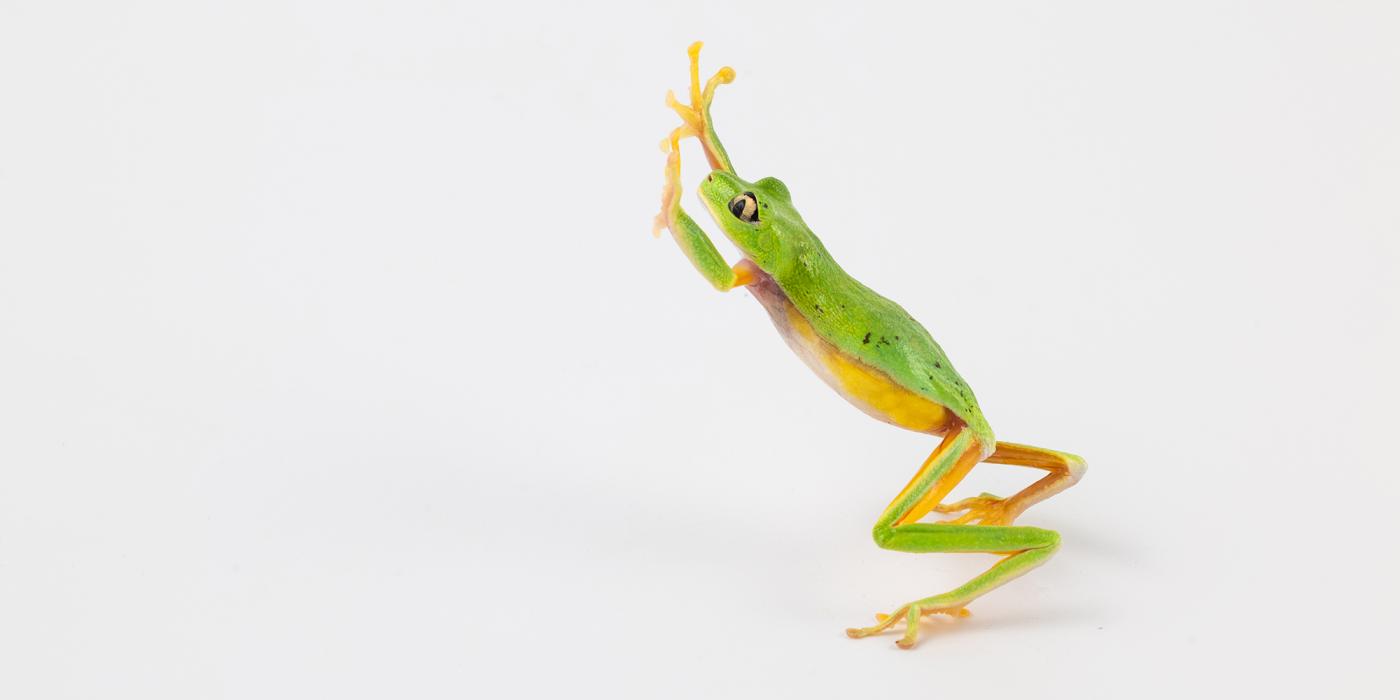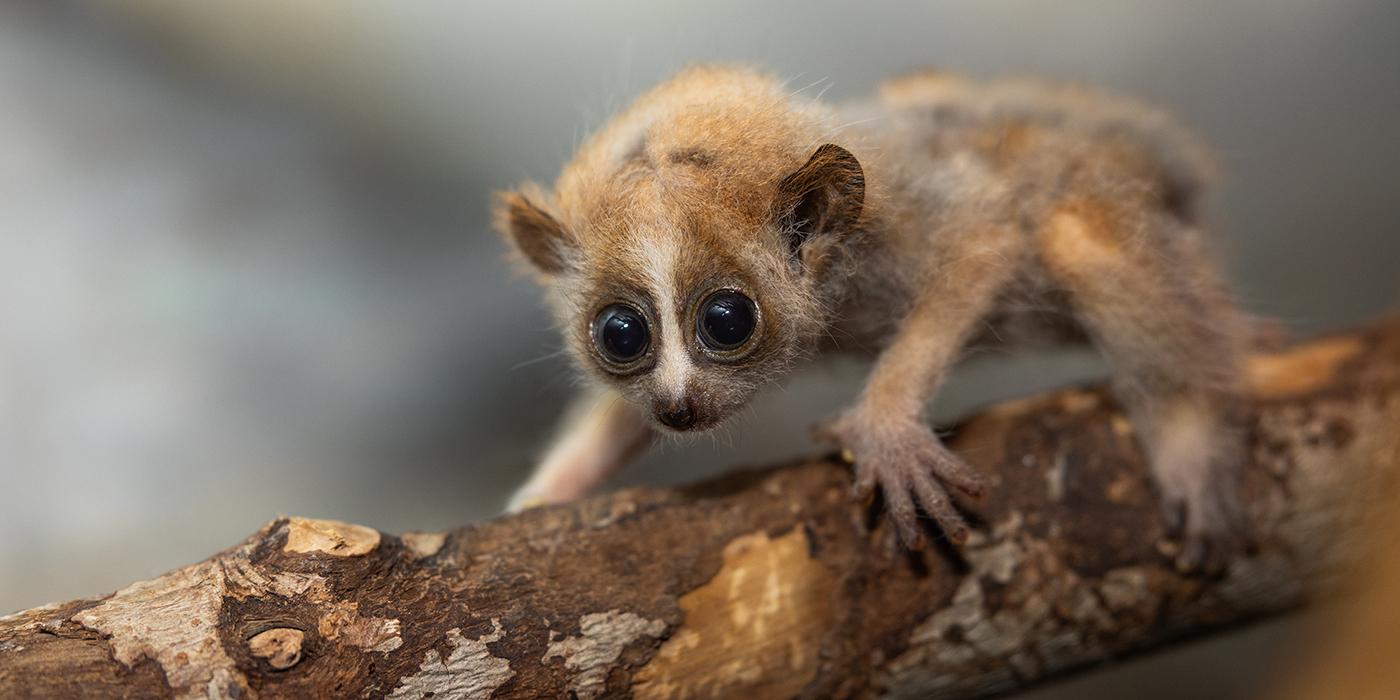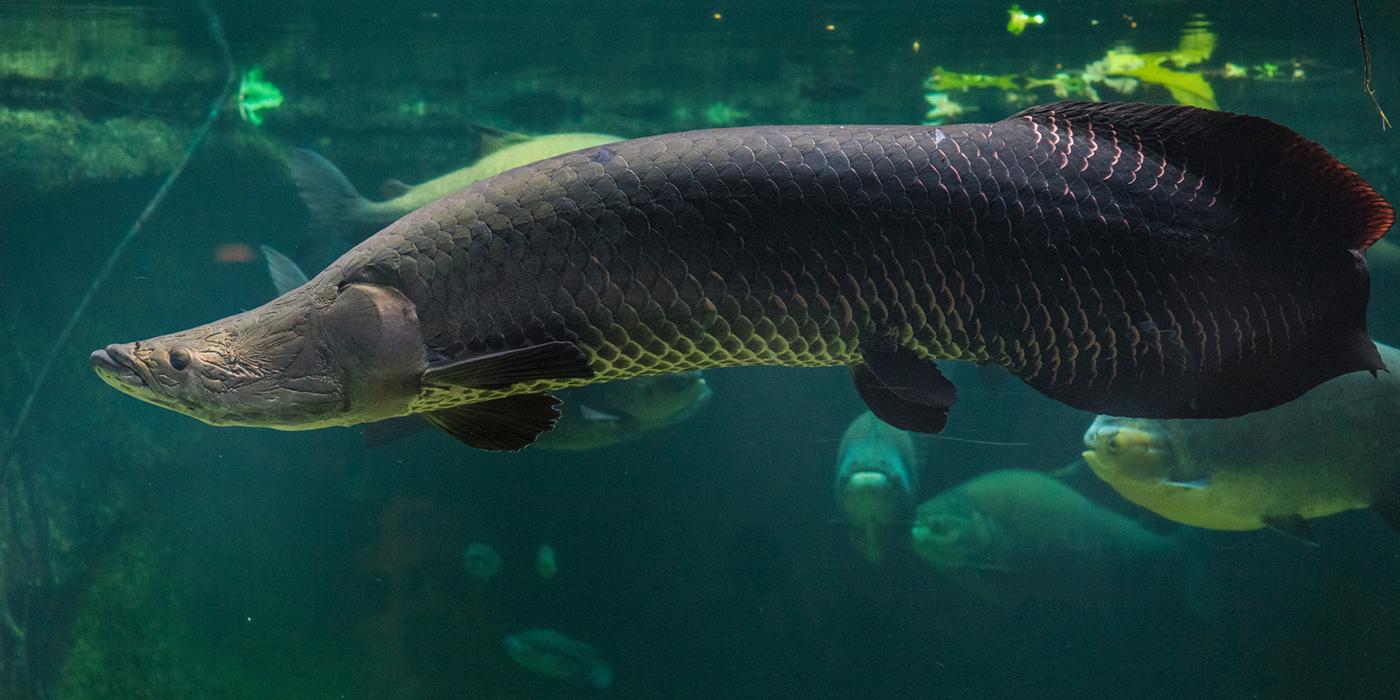The Hidden Life of Vernal Pools
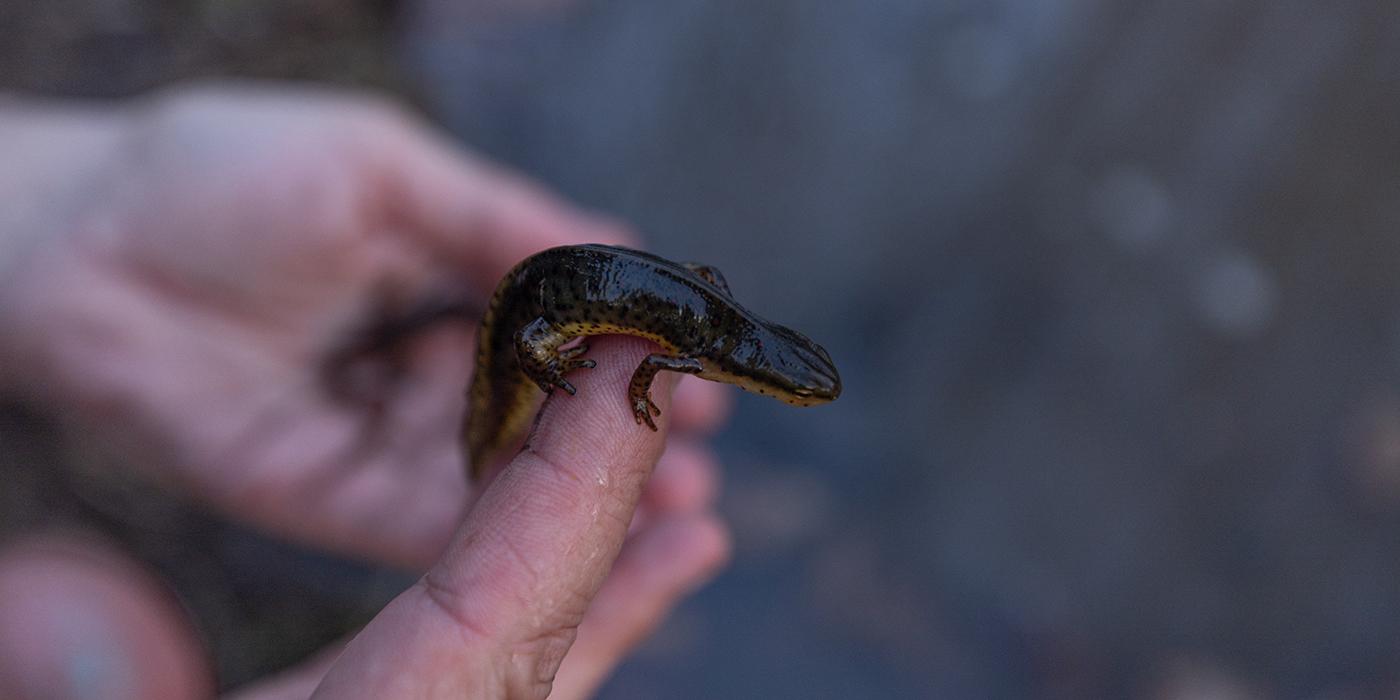
Imagine an early morning hike in the forest. Damp leaves from spring showers cushion your step and tiny droplets fall gently upon lush foliage. In the air there’s the scent of pine needles. There’s noise: hundreds of tiny chucks from a symphony of wood frogs. You trace the sound to its source: a shallow pond in the woods. The pond wasn’t there when you walked by last month, and it will be gone in just a few weeks’ time.
A closer look at the pond reveals a hidden natural world. Dozens of tiny spring peepers, clutches of jelly-like salamander eggs, swarms of insects and hardy aquatic plants are hiding just beneath the water’s surface.
Springtime has arrived, and you’ve just stumbled upon a vital lifeline for an amazing diversity of animal species. Your discovery is a vernal pool, an important —and increasingly threatened—wetland ecosystem.
What is a vernal pool?
Vernal pools are shallow, natural-forming ponds that provide unique habitat areas for woodland plants and animals. They only hold water for a portion of the year, which makes them unsuitable habitats for fish. However, amphibians and crustaceans depend on these wetland habitats for critical stages in their life cycles.

Vernal pools, like the one pictured above, are shallow depressions that fill with water in spring and dry out by fall. These pools are connected to the life cycles of dozens of species of amphibians, reptiles and other wildlife.
Vernal pools form when a sunken area in the landscape fills with water, usually through some combination of spring rain and snowmelt. Vernal pools can fill and dry several times throughout the year. In years with little to no rainfall, they may not fill at all.
Vernal pools:
- Can be found worldwide, but are most common in woodland habitats in cooler climate areas
- Are ephemeral, often completely drying up during the summer and fall months
- Generally hold water up to a depth of 12 inches (30 centimeters) of water
- Range in size from small puddles to shallow lakes
- Are not connected to larger bodies of water such as rivers, lakes and streams
What kinds of wildlife can be found in vernal pools?
Depending on where you live, the vernal pool closest to you may attract species as diverse as white-tailed deer, egrets, racoons, bears, waterfowl, squirrels, snakes, turtles, and hawks.
Some animals, including many mammals and birds, use the ponds for a quick drink of water or a quiet place to rest. Others, like salamanders, frogs, and tiny crustaceans known as fairy shrimp, are uniquely adapted to live their lives in sync with the pool’s seasons.
Vernal pools make excellent habitat areas for amphibians. Wood frogs and spotted salamanders will often emerge from their winter sheltering spots and seek out vernal pools following the first warm rainy night (above 50 degrees Fahrenheit in spring.) As temperatures rise, spring peepers, toads and gray tree frogs will follow.
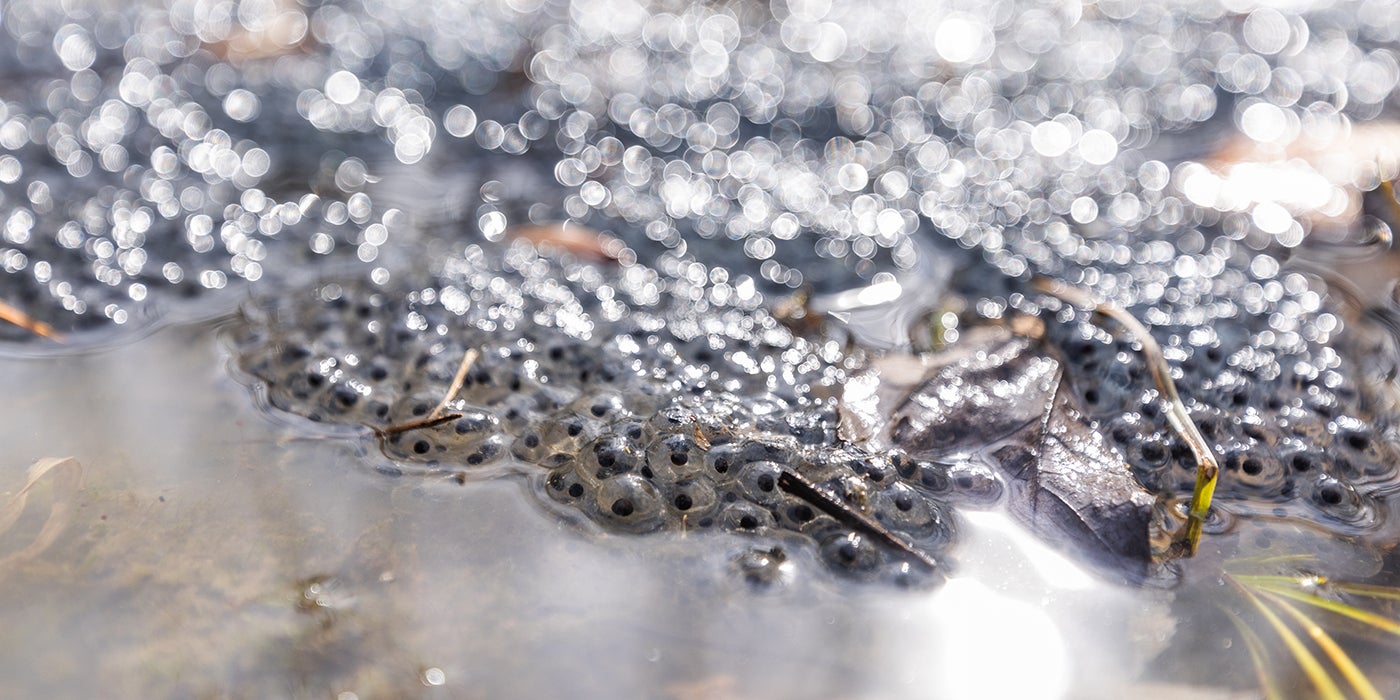
A cluster of amphibian eggs in a vernal pool. Because vernal pools dry out and are not connected to large bodies of water, fish cannot live in them. With fewer egg-eating predators, the pools are ideal hatcheries for dozens of species of amphibians.
What makes a vernal pool a good habitat for amphibians?
Animals that rely on a highly specific habitat are known as “obligate species.” Vernal pool obligates are unable to complete their life cycle anywhere else.
One example of a vernal pool obligate is a wood frog. If a wood frog laid its eggs in a river or stream, those eggs would be an easy meal source for many different types of fish. However, vernal pools are not connected to large bodies of water and dry up for part of the year, and fish cannot survive a dry-out. This gives the eggs a chance to hatch.
While an amphibian’ eggs may be safe from fish inside a vernal pool, other amphibians like red-spotted newts, or even reptiles like snapping turtles, will forage in a vernal pool and snack on newly laid eggs. Meanwhile, hundreds of species of microorganisms, including fairy shrimp, daphnia and insect larvae, are year-round vernal pool in habitants. Many of these tiny animals have developed special adaptations that give them the ability to go dormant when the wetland dries in late summer and re-awaken when the pool fills again in springtime—just in time to be eaten by those hatching tadpoles and froglets.
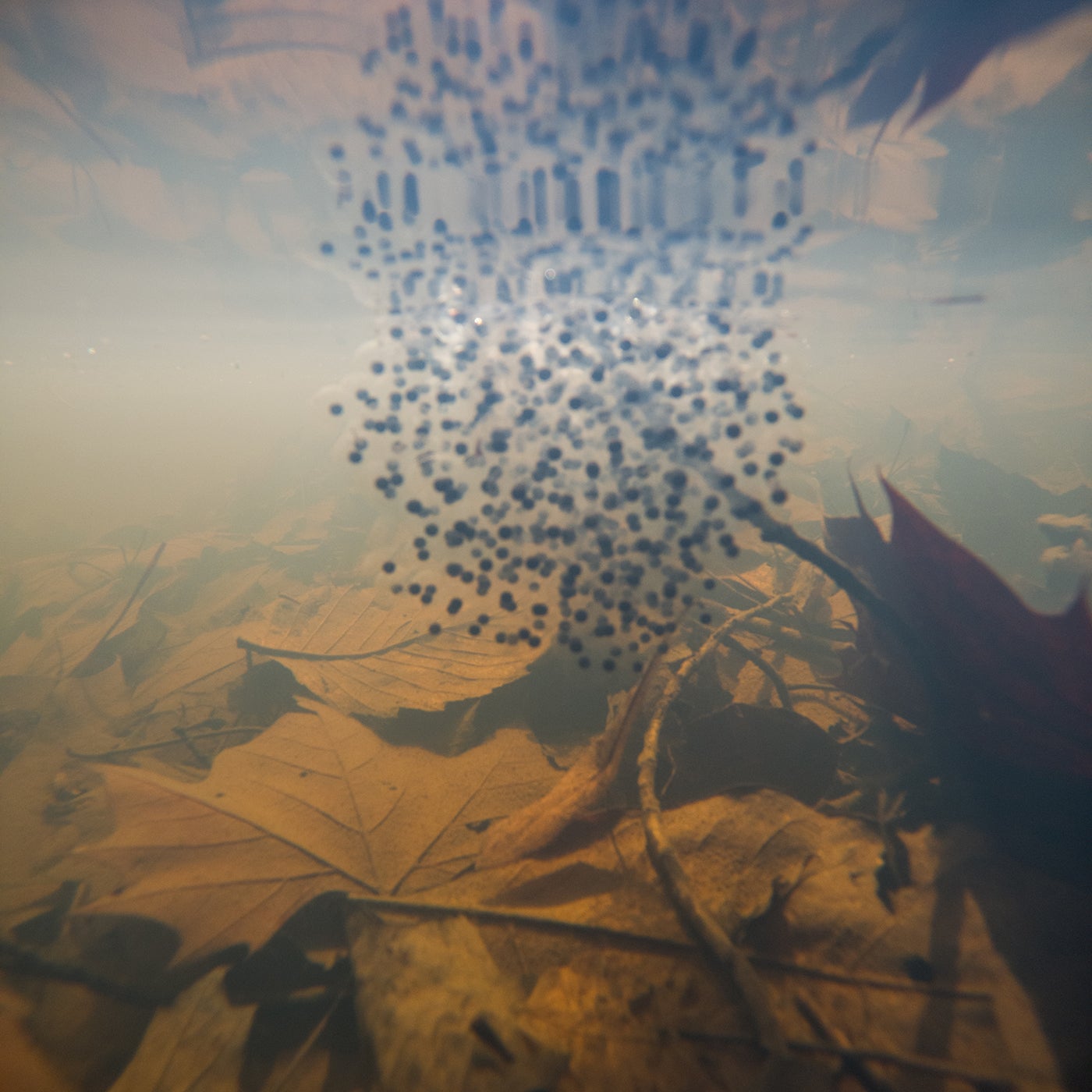
Amphibian egg masses are often attached to submerged sticks or vegetation. A single egg mass can contain thousands of individual eggs.
What role do vernal pools play in the ecosystem?
Vernal pools are crucial for maintaining health and balance in many forest ecosystems. Because these wetlands are woven into the life cycles of amphibians, the absence of a vernal pool can result in fewer frogs, toads and salamanders in that area. Amphibians are critical to the food chain; healthy population of amphibians keeps insect populations in check, and larger animals rely on these amphibians as their food sources. Balanced animal populations keep forests healthy, and forests benefit life on Earth.
If they’re so important to wildlife, surely they are protected?
Not always. Although laws like the Clean Water Act provide legal protection for many large and permanent wetland ecosystems in the United States, seasonal wetlands that are not located near bigger bodies of water often fall out of the law’s jurisdiction.
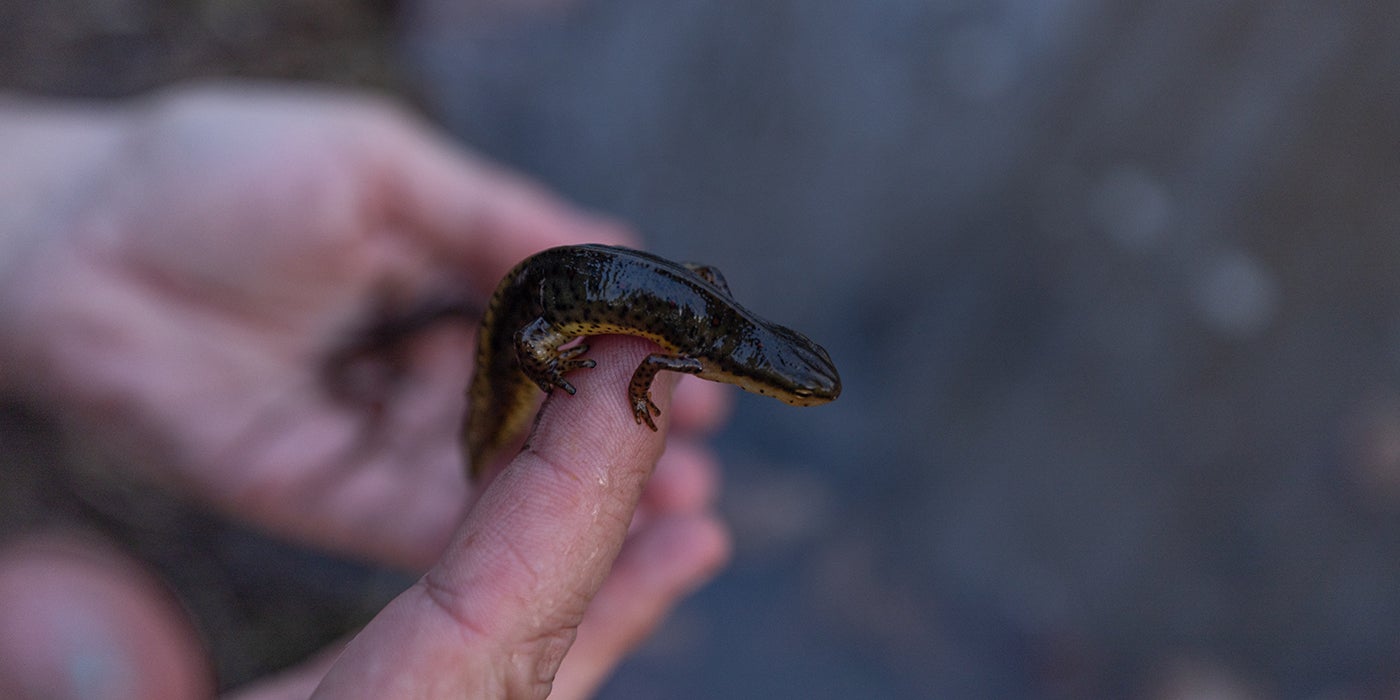
Dozens of species of amphibians, like this eastern newt, can be found in vernal pools.
What threatens vernal pools?
Because vernal pools are so often overlooked as habitat areas, they are often drained or destroyed in human development. In fact, more than 90% of vernal pools have already been destroyed in California. The construction of roads, ditches and drainage ponds prevents the formation of vernal pools, interrupting an amphibian breeding process that goes back for tens of thousands of years.
Does climate change affect vernal pools?
Yes. When humans burn fossil fuels like gas, oil, and coal for energy, carbon dioxide is released into the Earth’s atmosphere. This carbon dioxide builds up in the atmosphere and acts like a blanket, trapping in heat. The thicker the blanket, the more heat is trapped beneath it, causing excess warming. The extra heat is warming oceans, melting glaciers, and changing temperature patterns. Together, these forces are disrupting normal weather patterns and leading to changes in the frequency, intensity, and duration of extreme weather events.
Amphibians and other vernal pool inhabitants have rhythms of life that are tied to specific weather patterns. Extreme or irregular weather events—like drought, cold snaps or heat waves—can result in vernal pools freezing following an abnormal winter warm spell or to dry out before larvae have had a chance to grow and metamorphose. Over time, these disruptions can throw normal amphibian breeding cycles out of sync, which makes it harder for them to thrive and, in turn, affects the health of the whole forest ecosystem.
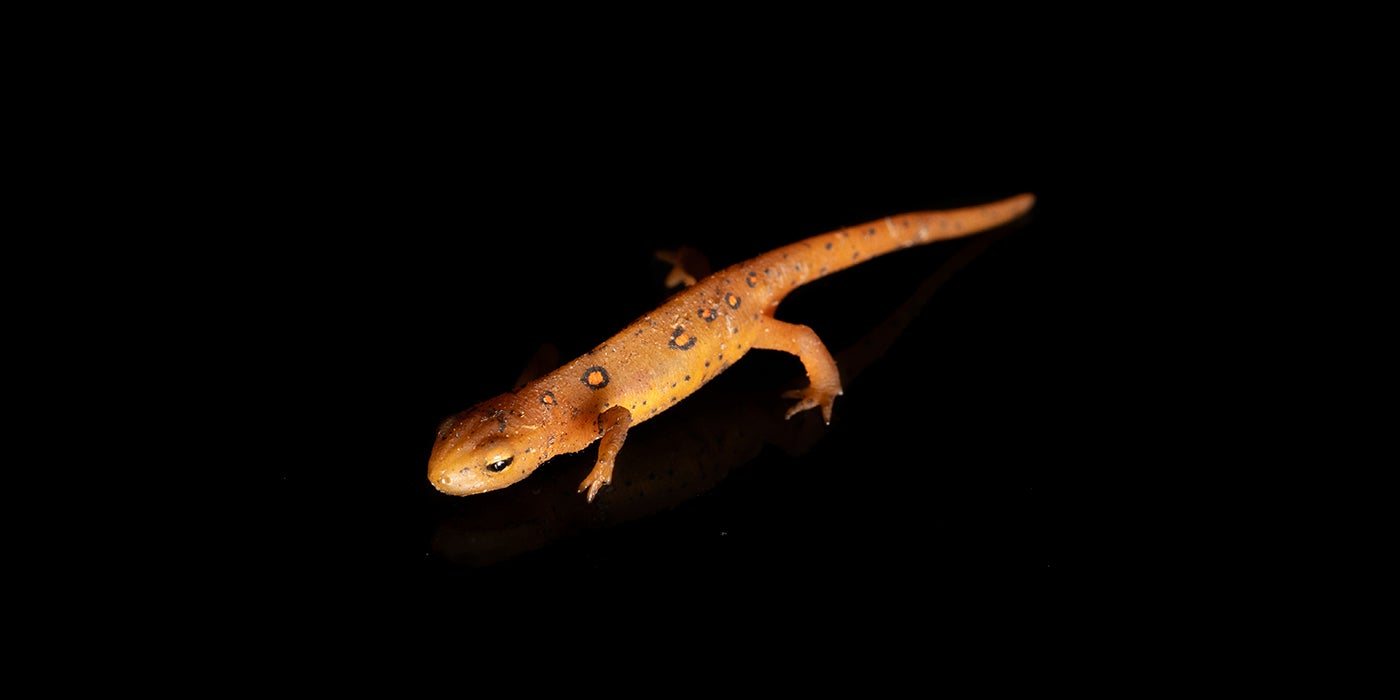
Red-spotted newts are commonly found in vernal pools in the Eastern United States.
What can we do to protect vernal pool habitats?
Whether you live in wilderness, suburbs or a city, there’s always something you can do to make your community easier for wildlife to live in.
Interested individuals can donate their time or money to local conservation organizations. Citizen science programs like inaturalist rely on volunteers to collect important information on amphibian populations. Community-level actions, such as organizing cleanups of local streams or ponds, can also help restore valuable habitat areas for animals.
And if you own property or land, making changes to the landscape may make it easier for animals in your backyard to thrive. In many developed areas, landscaping features like drainage ponds and culverts move water out of shallow depressions, keeping vernal pools dry year-round. Engineering the landscape will keep those vernal pools full in the springtime, which is when amphibians (and other life forms) rely on them the most.
Small, local actions may not seem like much, but every healthy pool and mini-habitat is a step towards stabilizing the climate, preserving freshwater resources, and supporting biodiversity.
After all, who doesn’t want to listen to a chorus of frogs each spring?
Visit the Reptile Discovery Center and Amazonia exhibits to learn how the Smithsonian is working to protect amphibians and their natural habitats.
Don't live near the Zoo? Check out Smithsonian scientist Carly Muletz Wolz's salamander-spotting guide and see if you can find any vernal pool residents in your local area!
